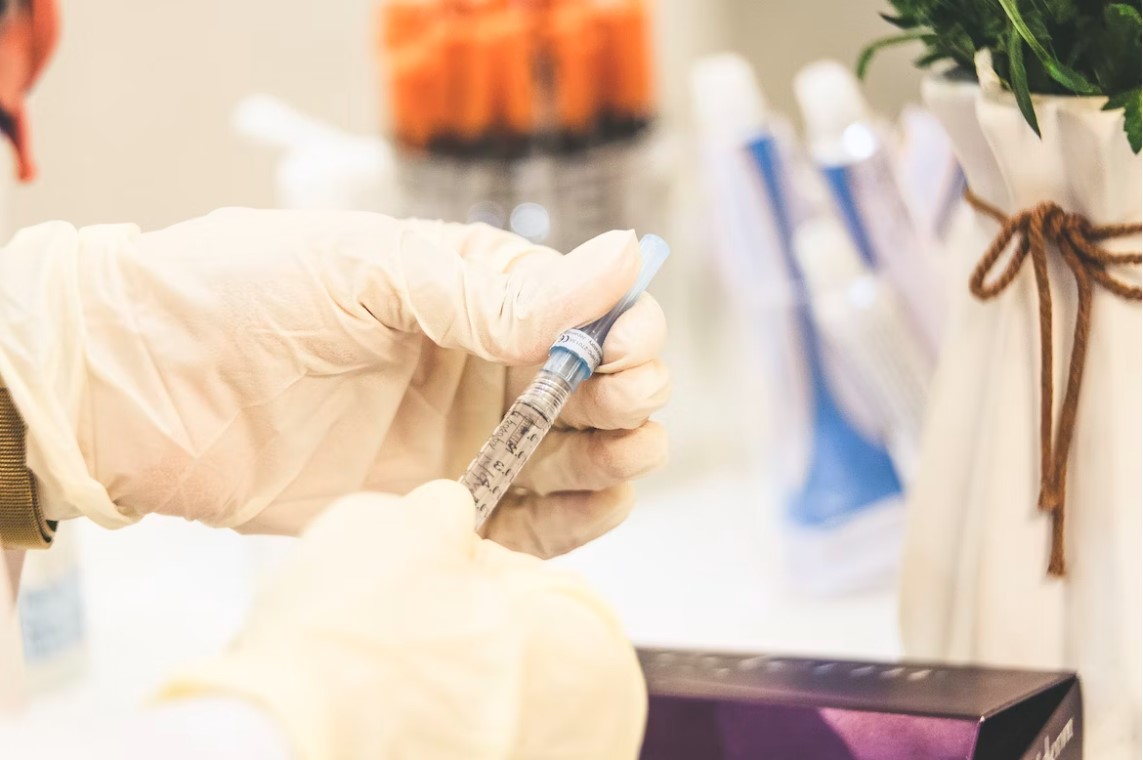 Author: Jasmine Burrows, Progressive Legal
Author: Jasmine Burrows, Progressive Legal

Self Care IP Holdings Pty Ltd v Allergan Australia Pty Ltd [2023] HCA 8 (Botox v Protox)

Botox v Protox Facts
- The second respondent, Allergen, manufactures the injectable pharmaceutical product, Botox.
- Allergen is the registered under the Trade Marks Act 1995 (Cth) (“the TM Act“) as the owner of the BOTOX mark in class 5 for goods including “[p]harmaceutical preparations for the treatment of … wrinkles” and in class 3 for goods including “antiageing creams” and “antiwrinkle cream”.
- The class 3 mark (Botox mark) is a defensive trade mark under s 185 of the TM Act and the Allergan do not use the mark for any goods in this class.
- The appellants, Self Care, supply cosmetic products in class 3, including anti-wrinkle skincare products, under the trade mark FREEZEFRAME.
- Self Care’s products are topical creams, serums and lotions that are typically self-applied.
- The relevant products were two of Self Care’s products – Inhibox and Protox.
Issues
- In relation to alleged infringement of the BOTOX mark contrary to s 120(1), there were two issues:
- Did Self Care use the phrase “instant Botox® alternative” on its packaging and its website in relation to Inhibox as a mark and, if so, was it deceptively similar to the BOTOX mark?;
- When Self Care used PROTOX as a mark, was it deceptively similar to the BOTOX mark?
- The third issue concerned whether Self Care contravened ss 18(1) and 29(1)(a) and (g) of the Australian Consumer Law (“the ACL”) and made the long term efficacy representation when it used the phrase “instant Botox ® alternative” on its packaging and its website in relation to Inhibox.
Botox v Protox Decision (Kiefel CJ, Gageler, Gordon, Edelman and Gleeson JJ)
- The appeal was allowed in both proceedings with costs.
- The Full Court orders were set aside and, in their place, orders were made dismissing the appeal to the Full Court with costs.
- Self Care did not infringe Allergan’s BOTOX mark under s 120(1) of the TM Act by its use of either “instant Botox® alternative” or PROTOX.
- Self Care did not contravene the ACL and the long-term efficacy representation was not made.
Reasoning for the Botox v Protox Decision
Relevant Aspects of the TM Act
Their Honours set out the structure and policy of the TM Act in relation to the registration and protection of marks. The central question was whether the reputation of a trade mark was relevant to infringement proceedings under s 120 (1).
Their Honours looked at the registration process of applying for a trade mark. The registration of a mark in respect of the applicant’s goods can be opposed under s 60 of the TM Act. This means that a prior mark has established a reputation in Australia, and the use of the applicant’s trade mark would be likely to deceive. It was decided, however, that proof of reputation alone is not sufficient to prove deception. The respondent must show that use of the applicant’s mark would be likely to deceive or cause confusion.
Their Honours looked at defensive trademarks in Part 17 of the TM Act. If a trademark owner has extensively used a registered mark for certain goods, they can register a defensive mark for those goods. This defensive mark indicates a connection between the registered owner of the original mark and other goods, suggesting that the owner’s mark is associated with those other goods as well. An applicant for a defensive registration must establish the reputation of the first mark in Australia. Allergan’s use and reputation of BOTOX for class 5 goods meant that it was entitled to register BOTOX as a defensive mark in class 3 for goods including “anti-ageing creams” and “anti-wrinkle creams”.
Trade mark infringement under s 120(1):
Their Honours looked at reputation. The relevance of reputation in infringement actions has been contentious in the past. Click here for advice on trade mark infringements.
Their Honours decided that reputation should not be taken into account when assessing deceptive similarity under s 120(1). It was important that in relation to the use of a sign as a mark, reputation was expressly addressed by the TMA at four separate stages and in specific and distinct ways. These are the only times reputation is relevant. These four stages are:
- Registration of a mark may be opposed under s 60 which involves the reputation of an earlier mark;
- The registration of a defensive mark under section 185 offers stronger protection to marks that have been extensively used for specific goods or services. This protection ensures that using the same mark for significantly different goods or services is less likely to confuse or deceive the public;
- In an infringement action concerning a well-known mark, to work out whether a mark is well known in Australia, one must consider the extent to which the trade mark is known within the relevant sector of the public; and
- The reputation of a registered mark is considered under s 24 i.e. when a mark becomes a generic description of a good or service.
Self Care’s use of “instant Botox® alternative”:
Allergan had already conceded that the use of “Botox ® alternative” simpliciter was not used as a trade mark. The court then considered the full phrase, “instant Botox® alternative”. It was decided that there was still no trade mark use. This was because a trade mark is a “badge of origin”. Their Honours then identified similarities and differences of the phrase on its packaging and their website.
Their Honours noted that the size, font, and presentation was inconsistent when used on different packaging and the website. This indicated that it was not being used as a “badge of origin”. In some cases, the phrase was presented on one line and in other cases, two lines. There was also varying capitalisation used in the phrase.
The phrase when used on packaging and the website appeared alongside two explicit badges of origin; FREEZEFRAME and INHIBOX, which appeared more visually dominant. The text was distinctive and stylised and could easily be identified as a “badge of origin”. Their Honours concluded that the phrase “instant Botox® alternative” appears more descriptive of the product and to have ordinary meaning.
Their Honours also concluded that the Full Court was presented with the wrong question. The question posed was whether there was an implied association in trade source between the different products. In addressing this question, the Full Court was accused of merging the two elements of section 120(1). Those were whether the sign was used as a trademark and whether that trademark was deceptively similar to the registered mark. Their Honours kindly noted that it was a common mistake.
The correct approach was to ask whether the sign used indicated the origin of goods in the user of the sign. In this case, Self Care was not using the phrase to indicate that it was the source of the goods or to suggest a connection in the course of trade between the goods and Self Care. As Self Care didn’t use the phrase as a mark, its appeal against the Full Court’s finding of infringement, had to succeed.
Self Care’s use of PROTOX
Their Honours posed the question: does PROTOX so nearly resemble BOTOX for anti-wrinkle creams in class 3 that it is likely to deceive or cause confusion as to the source of those products?
Their Honours concluded that PROTOX was not deceptively similar to BOTOX because the two marks were distinct enough that individuals with ordinary intelligence and memory would not likely confuse them.
Their Honours determined that while the words in question appeared similar in appearance and sound, they conveyed different ideas or meanings. Citing previous legal cases (Henschke and Australian Meat Group), the judge considered the “ubiquitous reputation” of BOTOX, concluding that the likelihood of an imperfect recollection of the BOTOX mark was low.
Additionally, even if someone had an imperfect recollection, they were not likely to be deceived. The judge’s conclusion was supported by the fact that the PROTOX mark was consistently used alongside the FREEZEFRAME mark and there was no evidence of actual confusion between the two.
Contraventions of the ACL
Their Honours had to consider whether the phrase “instant Botox ® alternative” conveyed the long-term efficacy representation in its packaging and marketing material.
Packaging
The packaging of Inhibox stated that its effect “lasts for hours,” which directly contradicted the long-term efficacy representation. This contradiction reduced the likelihood of reasonable consumers being misled into believing that Inhibox’s effects lasted as long as the effects of Botox injections.
Furthermore, the packaging also referred to the effects of Inhibox as “long term” on the back. In the context provided, it was unlikely that consumers would interpret this phrase to mean that Inhibox’s effect lasted the same duration as Botox injections. This understanding was influenced by other statements on the packaging, such as “lasts for hours” and “instant.” Considering the entirety of the packaging, their Honours concluded that reasonable consumers would likely perceive it as too good to be true that Inhibox had both instant effects and the same long-lasting effects as Botox.
Moreover, considering factors such as the difference in form (cream vs. injection), price disparity, and distinct sales locations, it was unlikely that the two products would be sold in the same places.
Website
Under the phrase INSTANT AND LONG TERM RESULTS were phrases such as CLINICALLY PROVEN, INSTANT BOTOX® ALTERNATIVE, FREEZES WRINKLES INSTANTLY and REDUCES WRINKLES LONG TERM. The page also referred to Inhibox as “the original Instant Botox® Alternative”.
Under the ”Description” tab, similar statements were made. Their Honours decided that these were not sufficient to convey to the reasonable consumer that Inhibox’s wrinkle reducing effects would last as long as botox.
Need Trade Mark Help?
Please get in touch with us today via phone or the contact form on this page.


